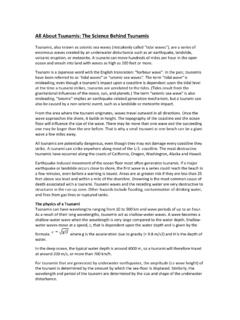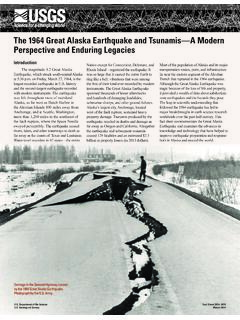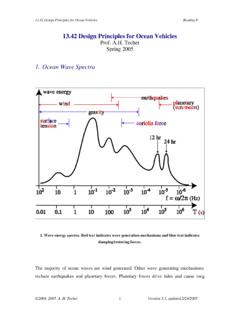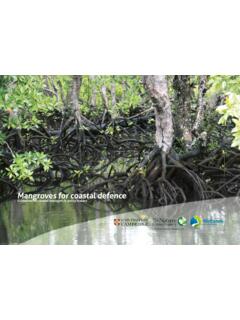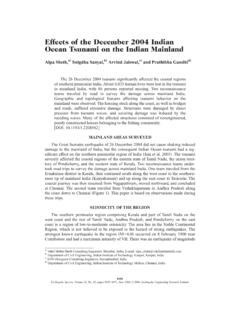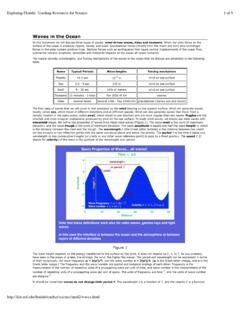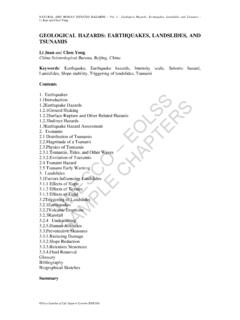What Are Waves Tsunamis M
Found 10 free book(s)Natural Disasters | 5E Lesson Plan for Grades 3-5 [PDF]
www.generationgenius.comdangerous the waves of tsunamis are. Station 3 demonstrated the role plate boundaries play in causing earthquakes, subduction, creating volcanoes, and forming mountains. Station 4 provided an opportunity for students to discuss what happens to organisms and the environment when volcanoes erupt.
All About Tsunamis: The Science Behind Tsunamis
nhmu.utah.eduTsunamis, also known as seismic sea waves (mistakenly called “tidal waves”), are a series of enormous waves created by an underwater disturbance such as an earthquake, landslide, volcanic eruption, or meteorite. A tsunami can move hundreds of miles per hour in the open ocean and smash into land with waves as high as 100 feet or more.
The 1964 Great Alaska Earthquake and Tsunamis—A …
pubs.usgs.govthe uplifts and tsunamis produced by the 1964 earthquake were greater than those generated by displacement in the subduction zone itself. These secondary ruptures were commonly located closer to shore, reducing the travel and warning times of the waves. After the 1964 earthquake, vertical uplifts of 36 feet were mapped along splay faults on ...
1. Ocean Wave Spectra - MIT OpenCourseWare
ocw.mit.eduFeb 24, 2005 · Earthquakes are the major cause of tsunamis which, while rare, can be catastrophic if the earthquake occurs near or on the coast. Waves also encounter forces that tend to restore them to a flat surface. For small wavelength (high frequency) waves surface tension plays a large role in damping out these ... M o , which may be defined in terms of ...
Mangroves for coastal defence - The Nature Conservancy
www.nature.orgTsunamis These are rare events and local knowledge or memory may be misleading. Data on seismic activity and proximity to seismically active regions, along with long-term historical data and geomorphological data (seabed, coastal profile), can help to assess the risk and potential intensity of tsunami waves. Wind and swell waves
Effects of the December 2004 Indian Ocean Tsunami on the ...
www.iitk.ac.inhas experienced tsunamis earlier. The earliest record dates back to 31 December 1881, when a tsunami 1mhigh was recorded in Chennai. It was caused by an earthquake of M=7.9 below Car Nicobar Island.TheAugust 1883 eruption of the Krakatoa volcano in Indonesia caused 2-m-high tsunami waves in Chennai. On 26 June 1941, an M=8.1
Waves in the Ocean - FCIT
fcit.usf.eduWaves in the Ocean In this document we will discuss three types of waves: wind-driven waves, tides and tsunamis. When the wind blows on the surface of the ocean it produces ripples, waves, and swell. Gravitational forces (mostly from the moon and sun) plus centrifugal
Water - NCERT
ncert.nic.inform huge waves. These may cause tremendous destruction. An earthquake, a volcanic eruption or underwater landslides can shift large amounts of ocean water. As a r esult a huge tidal wave called tsunami , that may be as high as 15m., is formed. The largest tsunami ever measured was 150m. high. These waves travel at a speed of more than 700 km ...
Geological Hazards: Earthquakes, Landslides and Tsunamis
www.eolss.netUNESCO – EOLSS SAMPLE CHAPTERS NATURAL AND HUMAN INDUCED HAZARDS – Vol. I - Geological Hazards: Earthquakes, Landslides and Tsunamis - Li Juan and Chen Yong ©Encyclopedia of Life Support Systems (EOLSS) magnitude m=5.5 (which is the same as that released by the explosion of the atomic bomb in Hiroshima in 1945), and the seismic energy …
Introduction To Physical Oceanography
earthweb.ess.washington.eduProfessor Fred Schlemmer at Texas A&M Galveston who, after using the book for his classes, has provided extensive comments about the material. I also wish to thank many colleagues for providing figures, comments, and helpful information. I especially wish to thank Aanderaa Instruments, Kevin
![Natural Disasters | 5E Lesson Plan for Grades 3-5 [PDF]](/cache/preview/8/0/9/c/e/7/2/f/thumb-809ce72f931e610fe94c698182f94da5.jpg)
